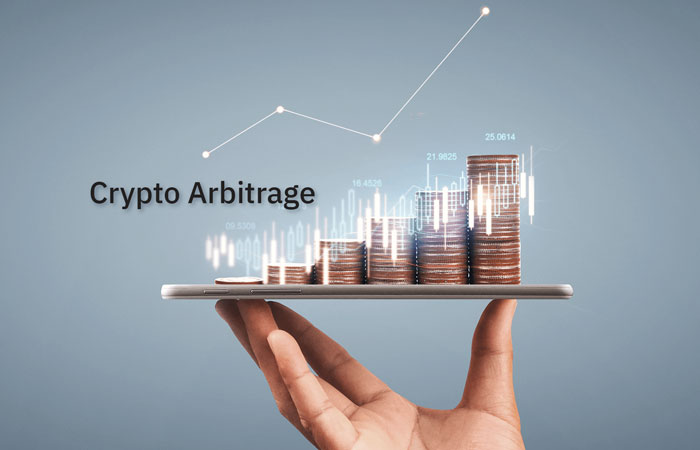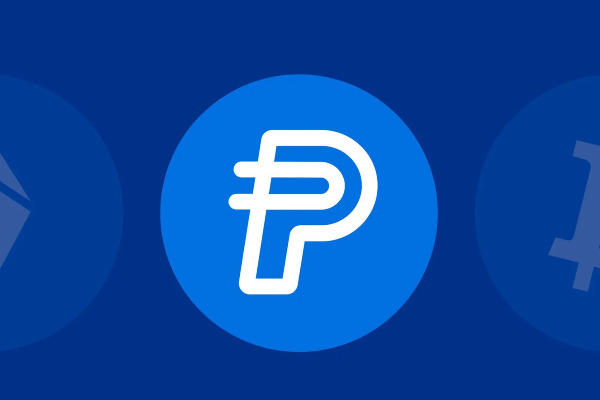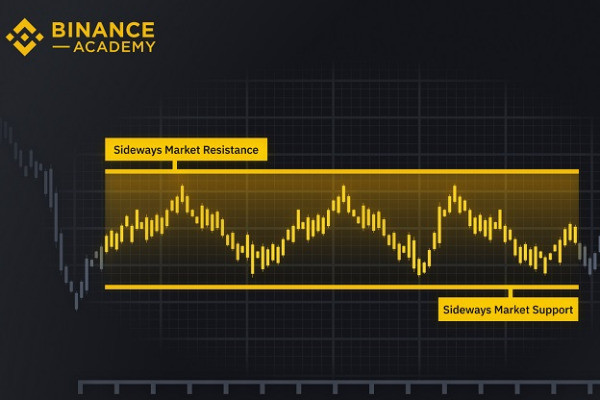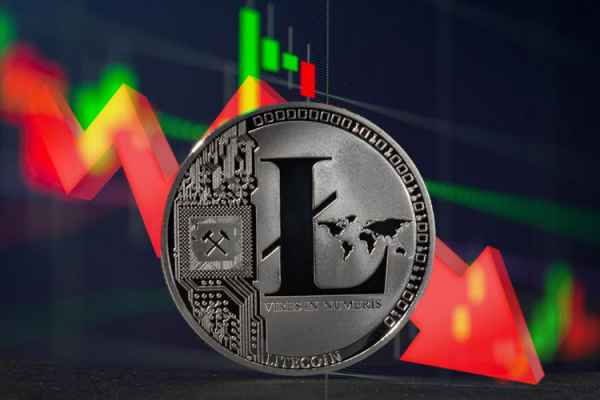Traders have been engaging with arbitrage practices for decades and now it's applicable to the crypto market as well. How does it work?
The popularity of cryptocurrency has now significantly increased thanks to rapid technology development and faster internet connection. Without us realizing it, we are starting to enter the world of virtual currency and experience a whole new dynamic that we might never have imagined before. One of the things that many people are currently interested in is crypto arbitrage.

The strategy is often seen as a relatively easy way to maximize gains. However, keep in mind that like any other strategy, it has to be done correctly in order to work. Hence, today we're going to discuss the best way to engage with crypto arbitrage along with its benefits and drawbacks. But before we jump into that, let's get to know the basic concept first.
Contents
What is Crypto Arbitrage?
Arbitrage is usually known as the act of buying a particular asset in one market and simultaneously selling it in another one for a higher price. The idea is to take profit from the price difference in multiple markets. So if the price of a particular asset is different in two different exchanges, a trader can take profit from it by buying the asset on one exchange at a cheaper rate and then selling it on the other platform at a slightly higher price.
It's worth noting that traders have been engaging in arbitrage practices long before the emergence of crypto. That means you can use arbitrage for various assets such as foreign currencies, precious metals, stocks, and more. However, the strategy might be more suitable for cryptocurrency compared to traditional assets because the crypto market is relatively new, highly volatile, and still less efficient.
Essentially, crypto arbitrage uses the same concept as traditional arbitrage, but the asset is in the form of digital currency. It is the process of taking profit from the price differences of cryptocurrencies across two or more exchanges. So, if Coinbase is selling Bitcoin for $45,000 and Binance is selling Bitcoin for $44,700, then you can make a profit by buying the coin on Binance, transferring it to Coinbase, and selling the BTC at a higher rate. The price differences are the result of different liquidities and the speed of each exchange in response to market changes.
Since there are currently hundreds of crypto exchanges in the world, and each sells crypto at slightly different prices, the crypto arbitrage opportunities are boundless. Crypto asset prices also fluctuate very easily over a short period of time, so price differences are more than likely to happen. This explains why more traders are looking for ways to maximize the chance and beginning to take an interest in crypto arbitrage.
What Makes Crypto Arbitrage Possible?
The purpose of crypto arbitrage has something to do with market efficiency. Economic experts argue that when the market is inefficient, people will start engaging in arbitrage until the prices finally regulate themselves. This is why crypto arbitrage is currently on the rise because the crypto market is less efficient compared to traditional asset markets.
There are several factors that make arbitrage practices suitable for crypto markets, namely:
- Variations in liquidity. The liquidity of a crypto asset depends on the number of people buying or selling it. Thus, it's only natural that the liquidity of a particular asset varies across multiple exchanges, resulting in different prices. Lower liquidity makes the price higher and vice versa.
- Different exchange types. Not all crypto exchanges have the same structure. Each exchange may target specific types of investors or countries, which can affect prices.
- Withdrawal and deposit speed. Exchanges with slower processing times usually take longer to process the overall market rates. The different speed also causes price differences.
- Foreign exchange rates. You can utilize the different rates in each exchange to generate profit.
See Also:
Is Crypto Arbitrage Legal?
This might be the main question that popped in your head when reading about crypto arbitrage for the first time. For those who have never heard about crypto arbitrage before, the practice may sound "dodgy" and perhaps too good to be true. In that case, you can let your breath out now because taking advantage of price differences doesn't actually break any laws. After all, people have been doing the same practice in traditional markets for decades now. In fact, we can even say that crypto arbitrage is pretty much needed in the crypto market because the activities of crypto arbitrageurs will eventually push the crypto prices across exchanges to converge.
However, you might want to pay more attention to cross-border arbitrage because each country has specific anti-money laundering policies and regulatory procedures. This doesn't make arbitrage illegal, but it's always a good idea to understand the policies of the countries you're about to trade in beforehand.
Types of Arbitrage and How They Work
There are many ways to practice crypto arbitrage. Each has advantages and disadvantages that may need careful consideration. Here are some examples:
1. Spatial Arbitrage
Spatial arbitrage is probably the most simplistic and straightforward type of arbitrage. It involves buying crypto from one exchange, transferring it to another exchange, and immediately selling it so that you can gain profit from the price differences of the two exchanges. In order to take full advantage, you should buy where the price is low and sell where the price is high.
See also: Bitcoin Price Today
Despite the simple method, spatial arbitrage has some risks. The problem with spatial arbitrage is that it exposes you to long transfer duration and high costs. To mitigate the risks, be careful not to leave a margin of error so you can use the opportunity and maximize your gain. Always check the withdrawal and deposit fees, and keep an eye on slow processing times and potential technological issues. Also, note that you have to be very fast with your transaction because prices are constantly changing and adapting to the market, so if you take too long, the price might have risen where you intend to sell.
2. Convergence Arbitrage
Some traders wish to avoided transfers and expensive fees that spatial arbitrage poses, so they use convergence arbitrage instead. Convergence arbitrage involves the act of buying an underpriced coin (going long) in one exchange and simultaneously selling overpriced crypto (going short) in another. Wait for the price to converge in the middle and then you can sell the long and buy back the short. This allows you to quickly transfer coins from one exchange to another.
3. Triangular Arbitrage
Triangular arbitrage is the most complicated out of the three because it involves taking advantage of the price difference of more than one cryptocurrency on the same exchange. In this strategy, an investor starts by purchasing one cryptocurrency then trades it for another crypto in the same exchange. In order to make a profit, the second crypto must be undervalued relative to the first crypto. The next step would be to further trade the second crypto for the third crypto that is relatively overvalued to the first. Finally, the investor would trade the third crypto for the first crypto and earn a profit.
For example, let's say you buy BTC and trade it to ETH. Then you trade the ETH to XRP, and lastly, trade the XRP back to BTC. Assuming that XRP is undervalued and XRP is overvalued relative to BTC, then at the end of the cycle, you'll end up with more BTC.
Currently, there are thousands of different cryptocurrencies in existence and you can pair any of them together to carry out the triangular arbitrage practice. The first issue that you might encounter is when comparing and choosing the assets to pair, especially if you're new to crypto trading. The easy way to solve this concern is to multiply the amount you're trading by the exchange rate of the first crypto, then divide it by the exchange rate of the third crypto. If the result is larger than the amount that you wish to trade, that means you can make a profit out of it. However, remember to always leave a margin of error.
Is Crypto Arbitrage Risky?
Unlike regular traders, crypto arbitrage traders don't have to make predictive analyses of the future prices of cryptocurrencies. They simply base their action on the available opportunities on the market and capitalize them on the spot. There's no need to analyze market sentiments or use predictive strategies to gain profit. Also, arbitrage traders typically execute trades that last only for minutes or even seconds, so the trades are not at risk for too long.

That being said, crypto arbitrage is not without any risk. The following are some factors that you must take into consideration:
Transaction fees
Bear in mind that trading across exchanges typically includes withdrawal, deposit, and trading fees. This might not be a big problem for regular traders that make huge profits by timing the market, but it certainly is for arbitrage traders who actively open and close trades across multiple exchanges. Even small fees will accumulate and eat into your profits, so watch out for this. To avoid getting high fees, it's wise to limit your activities to exchanges that provide low fees only. You can also make deposits on multiple exchanges and reshuffle the portfolios to take advantage of market inefficiencies.
Security
Since arbitrage traders need to deposit a lot of funds to their exchange wallets, they become more vulnerable to security risks associated with exchange hacks and exit scams. An exit scam happens when the exchange suddenly stops its operations and runs away with users' funds. Therefore, it's recommended to choose exchanges carefully, and it's better to stick to reputable exchanges.
Timing
It's important to note that crypto arbitrage is extremely time-sensitive. In this case, it would be disastrous if your arbitrage is unsuccessful just because of your exchange's poor speed. It's common for exchanges to undertake Anti-Money Laundering (AML) checks whenever a large sum of funds is involved, and the process can last for days, even weeks. Thus, you need to make sure if the exchange imposes these extra checks at the point of the withdrawal before you begin with arbitrage trades.
Furthermore, since you might have to execute cross-exchange transactions, you also need to consider the transaction speed of the blockchain. Some blockchains may take several minutes to one hour to confirm transactions, so it's advisable to pick blockchains with high transaction speed.
Conclusion
Crypto arbitrage might be a smart way to trade crypto, considering that the opportunity is enormous in the crypto market. It's definitely not a massive profit generator type of strategy, but it's profitable nonetheless. It can also feel a bit too complex at times, yet it offers easy profit once you get the hang of it. As with any other investment strategy, it's vital for you to do your own research and explore the strategy in more depth before trying it out and risking money. Keeping an eye on various exchanges and looking beyond basic crypto prices should help you find many arbitrage opportunities in the crypto market today.
Looking for a distinctive way to profit from the crypto market? Arbitrage may not be the only way, as you can also consider a much easier solution like affiliate programs. As a start, you can look for the best affiliate programs to earn Bitcoin.

 Dedicated FREE FOREX VPS
Dedicated FREE FOREX VPS Free FOREX Virtual Private Server
Free FOREX Virtual Private Server MT4 Demo Contest, Get $500
MT4 Demo Contest, Get $500 Sign Up for an Account, Claim 60% Deposit Bonus
Sign Up for an Account, Claim 60% Deposit Bonus Free MT4/MT5 VPS 2024
Free MT4/MT5 VPS 2024 Send E-mail and Get Free Merchandise
Send E-mail and Get Free Merchandise $1K Refer a Friend Bonus for Pepperstone Pro clients
$1K Refer a Friend Bonus for Pepperstone Pro clients Maximize Your Earnings with 100% Deposit bonus
Maximize Your Earnings with 100% Deposit bonus Trade to Win, $5,000 Monthly Demo Contest
Trade to Win, $5,000 Monthly Demo Contest Claim 30% + 15% Deposit Bonus from LiteFinance
Claim 30% + 15% Deposit Bonus from LiteFinance






 Bitcoin
Bitcoin Ethereum
Ethereum Tether
Tether BNB
BNB Solana
Solana USDC
USDC XRP
XRP Dogecoin
Dogecoin Toncoin
Toncoin Cardano
Cardano